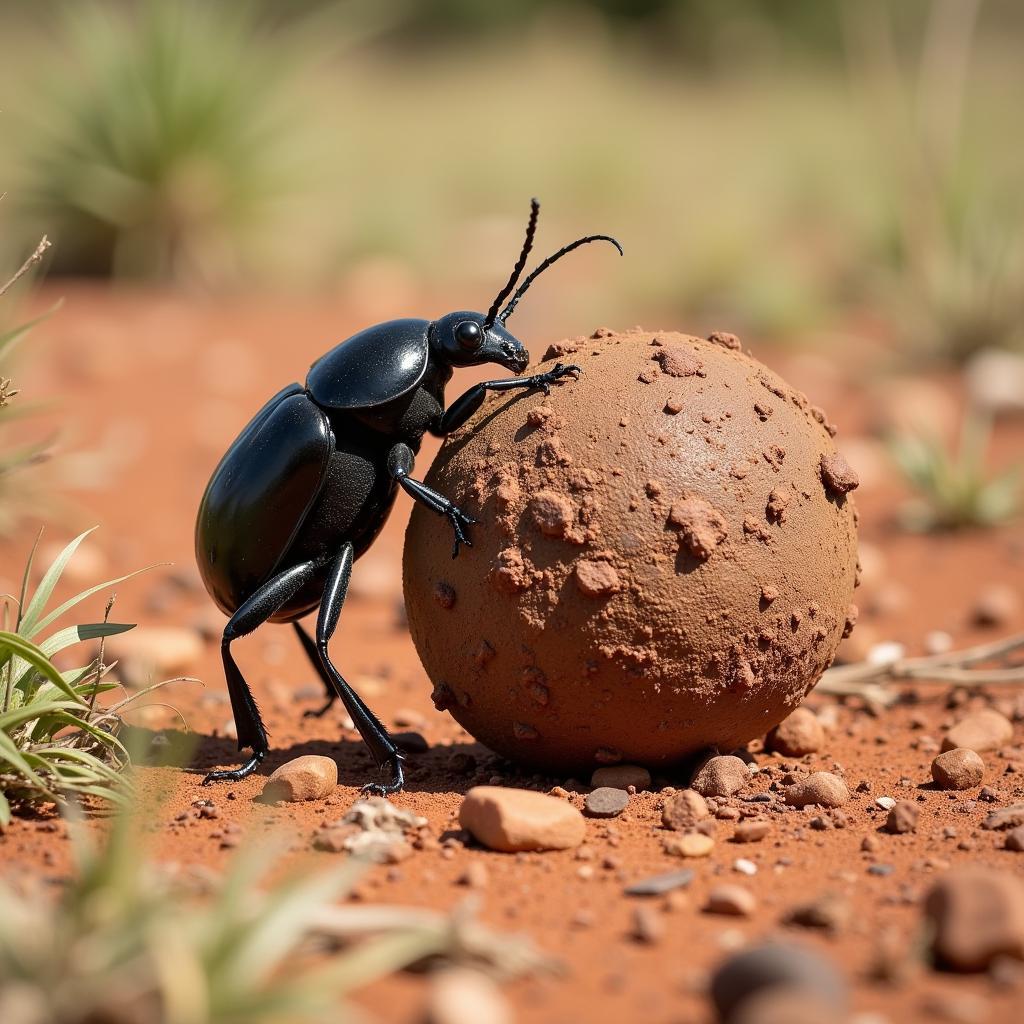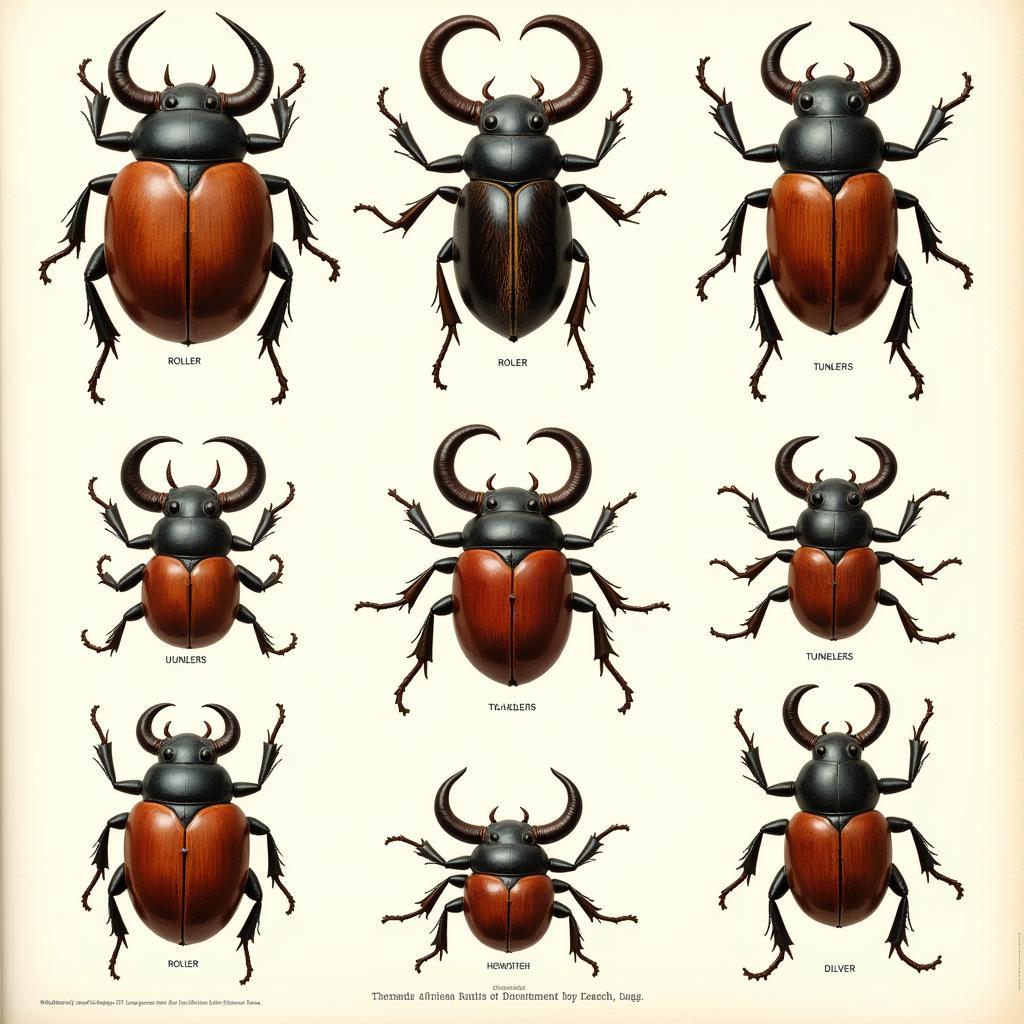The Amazing World of the African Dung Beetle
The African dung beetle, a tiny creature often overlooked, plays a vital role in the African ecosystem. These industrious insects are more than just scavengers; they are essential recyclers, soil aerators, and even seed dispersers. From the savannas to the forests, their impact is undeniable.
The Dung Beetle’s Ecological Importance
Dung beetles are nature’s cleanup crew. They efficiently remove dung, which would otherwise accumulate and create breeding grounds for disease-carrying flies and parasites. This sanitation service benefits both wildlife and humans, contributing to a healthier environment. Moreover, by burying dung, these beetles enrich the soil, providing vital nutrients for plant growth. They also improve soil structure through aeration, allowing for better water infiltration and root development. Some species even contribute to seed dispersal by burying dung containing seeds, promoting plant diversity.
Imagine vast grasslands covered in animal dung. Without the tireless work of dung beetles, the landscape would be quite different. The decomposition process would be significantly slower, impacting plant growth and overall ecosystem health. These small creatures are a testament to the interconnectedness of nature, demonstrating how even the smallest organisms can have a significant impact.
 African dung beetle rolling a dung ball
African dung beetle rolling a dung ball
Different Types of African Dung Beetles
African dung beetles exhibit a remarkable diversity, with various species specializing in different dung types and employing diverse strategies. Some are rollers, famously shaping dung into balls and rolling them away to bury. Others are tunnelers, digging directly beneath the dung pile to create underground nests. And then there are dwellers, who simply live within the dung itself. This specialization ensures efficient utilization of resources and minimizes competition between species.
From the tiny Scarabaeus satyrus to the larger Heliocopris gigas, each species has its unique role to play. Their diverse adaptations and behaviors reflect the complex interplay between these insects and their environment. It’s a world of intricate adaptations, highlighting the power of evolution and natural selection.
 Diversity of African dung beetle species
Diversity of African dung beetle species
The Cultural Significance of the African Dung Beetle
Beyond their ecological importance, dung beetles hold cultural significance in some African societies. In ancient Egypt, the scarab beetle, a type of dung beetle, was revered as a symbol of rebirth and renewal, representing the cyclical nature of life. This reverence is reflected in art, jewelry, and religious practices, showcasing the deep connection between humans and the natural world. The dung beetle’s role in transforming waste into something valuable resonated with ancient Egyptians, who saw it as a powerful symbol of transformation and creation.
Even today, the dung beetle continues to inspire artists and storytellers, symbolizing resilience, resourcefulness, and the interconnectedness of life. Dr. Khadija Mbwana, a renowned Tanzanian anthropologist, explains, “The dung beetle’s tireless work reminds us of the importance of respecting and preserving our environment, recognizing the value of even the smallest creatures.”
What Do African Dung Beetles Eat?
As their name suggests, African dung beetles primarily feed on animal dung. This includes dung from mammals like elephants, zebras, and antelopes, providing a readily available food source across the African savanna. They are remarkably efficient at extracting nutrients from this seemingly unappetizing resource.
Conclusion
The African dung beetle, a small but mighty creature, is an integral part of the African ecosystem. Their role in nutrient cycling, soil aeration, and seed dispersal contributes significantly to the health and balance of the environment. From their ecological importance to their cultural significance, these fascinating insects deserve our admiration and protection. Understanding and appreciating the role of the African dung beetle is crucial for preserving the biodiversity and ecological integrity of the African continent.
FAQ
- What is the lifespan of an African dung beetle? The lifespan varies depending on the species, typically ranging from a few months to a couple of years.
- How big can an African dung beetle get? Some species can reach up to 2 inches in length.
- Are all African dung beetles rollers? No, some are tunnelers or dwellers.
- Why are dung beetles important for the environment? They are essential for nutrient cycling, soil aeration, and seed dispersal.
- What are the main threats to African dung beetles? Habitat loss and pesticide use are major threats.
- Do dung beetles have any predators? Yes, they are preyed upon by birds, reptiles, and other insects.
- How do dung beetles navigate? Some species use celestial cues, like the sun and stars, to navigate.
Need help with dung beetle conservation or want to learn more? Contact us at Phone: +255768904061, Email: [email protected] or visit us at Mbarali DC Mawindi, Kangaga, Tanzania. We have a 24/7 customer service team.


